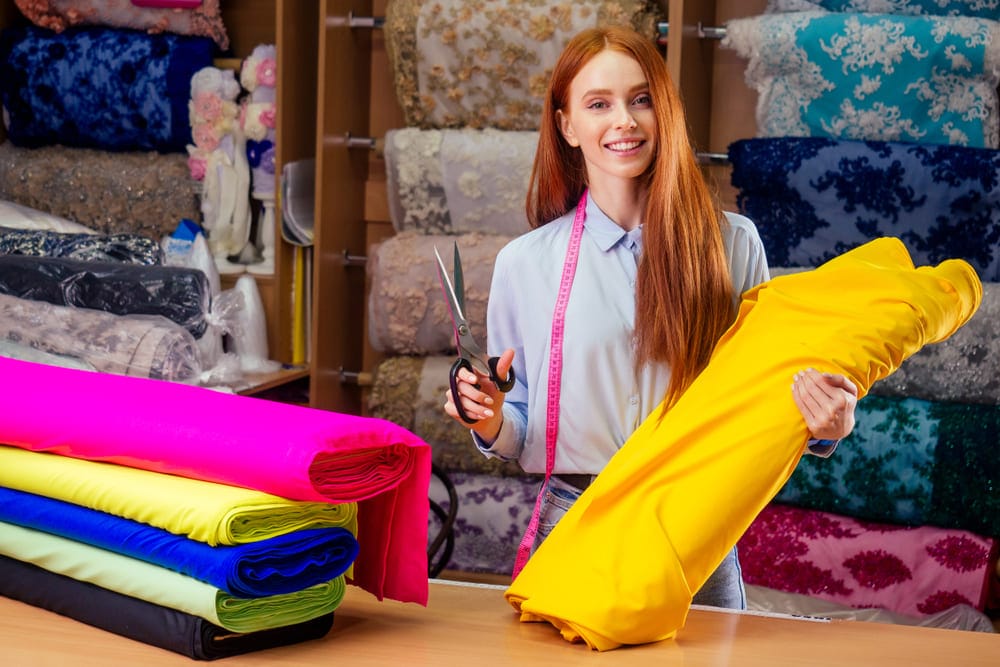- Home
- Blogs
- FabCouture
- Boutique Fabrics 101: How to Choose the Perfect Fabric for Your Fashion Line
- Boutique Fab...
Boutique Fabrics 101: How to Choose the Perfect Fabric for Your Fashion Line
- By FabCouture
- • Mar 08, 2023

If you've been contemplating launching your own clothing line, you're likely eager but may have some lingering questions. The decision to start a clothing line is a significant one, but it's also full of potential. One of the most important considerations when starting a clothing line is selecting the appropriate fabrics.
Although selecting fabrics for a clothing line is determined by various case-specific factors, this guide will provide you with some essential points to consider when choosing fabrics for your clothing line, based on our experience. So, let's begin!
The theme of the collection
To choose the right fabrics for your clothing line, it's crucial to begin with the theme and mood of your collection. This will guide your fabric selection process and help you narrow down your options. You want to find fabrics that align with the aesthetic and vibe of your line while offering versatility to create various looks.

For instance, if your collection is inspired by an artistic theme, you may opt for ethnic hand-block fabrics like Ajarakh, Bagru, Gamathi, and Ikat, among others. In contrast, for a fancy theme, you may consider Fancy Imported Fabrics.
Take your time to experiment with different fabrics until you find the perfect fit that embodies your brand and speaks to your target audience.
Buyer’s aspirations and occasions
When selecting boutique fabrics for your clothing line, it's crucial to consider your target audience, their aspirations, and the occasions for which they will wear your garments. Ask yourself what kind of impression you want them to make when they put on your clothes.
For instance, if you are aiming for a luxury market, you should opt for high-quality fabrics that embody the desired elegance. However, if your target is a more relaxed atmosphere, you can get creative with different patterns and textures.
Ultimately, it is your responsibility as a designer to choose the fabrics that will enhance the look and feel of your clothing. Therefore, take the time to research and select wisely.
Price of the ready garment
Keep in mind that the cost of fabric can significantly impact your business's success in the long run. If you're aiming to keep your expenses low, opt for affordable and easily available fabrics.
However, it's equally important to maintain the quality of your garments at the given price point. Finding a balance that works for your business is crucial, and you should also consider the type of customer you're targeting.
For instance, if your target market is a luxury segment, you'll need to use high-end fabrics like Silk and Brocades that justify a higher price tag. In contrast, if you're catering to budget-conscious shoppers, there are plenty of cost-effective options like Two-ply Cotton and Flex Fabric that still look stylish.
It's generally recommended to keep the fabric cost of an outfit between 20% and 40% of its total manufacturing cost. Research your options carefully to ensure that you find the perfect balance between affordability and quality for your brand.
Select your fabric forte
One can broadly categorize buying fabrics for their clothing line into three categories: Solid, Printed, and Decorative.
Solid fabrics like Dyed Rayon or Linen can be used to create a simple yet elegant look. Alternatively, printed fabrics like Cotton Prints or Chanderi Prints can add a touch of interest and color to your collection. If you are looking for something more elaborate, decorative fabrics like Velvet or Embroidered can add texture and dimension to your garments.
However, each option has its own set of advantages and disadvantages, so it is essential to consider what best fits your clothing line's vision and aesthetic.
Choice of vendor
Once you have selected the fabrics for your clothing line, it is vital to source them from the right vendor. Your initial step should be to identify a reliable vendor and build a business relationship with them. In the Indian fabric industry, it is well-known that a trustworthy vendor can either make or break your business. When choosing a vendor, important factors to consider include their transparency, market experience, commitment, communication skills, ready stock availability, supply agility, quantity flexibility, payment terms, and return policies.
Repeat orders and production scaling
As your business grows, which we're confident it will, you'll need to scale up your production and require fabrics in bulk quantities and on a repeat basis. In this context, two factors are vital: firstly, the vendor should be able to match the increased demand, and secondly, the fabrics should be suitable for scaling up production. For example, some handmade fabrics like Authentic Bandhani may not be scalable beyond a certain point, and you may have to avoid such materials if you plan for bulk production.
Conclusion
As a designer, your clothing line is your masterpiece that reflects your hard work and creativity. To make your clothing line stand out from the rest, it is crucial to carefully select appropriate fabrics. We believe that our guide will provide you with valuable insights to develop an entrepreneurial mindset and make informed decisions for your clothing line.
Leave a Comment
Blogs
Popular Posts
Newletter
Thanks for subscribe.

Fabcouture is an online fabric store to satisfy all your couture fabrics cravings for fabric connoisseurs. We delight in the fact that we source...
0 Comment